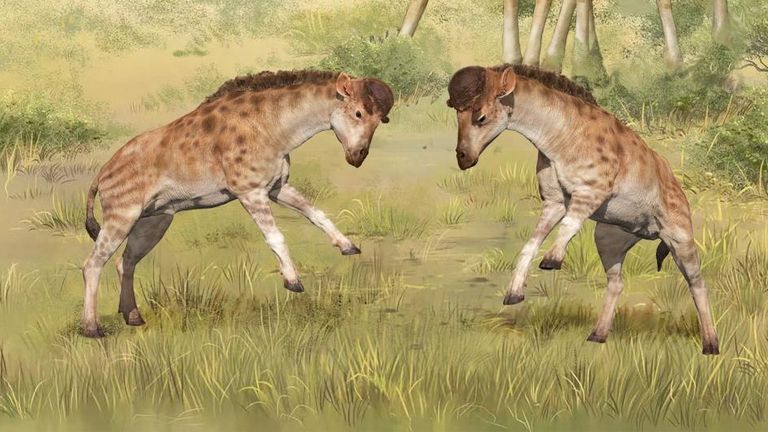[ad_1]
Giraffes may have evolved long necks to headbutt mating rivals, researchers in China have suggested.
It is commonly believed that the trademark neck of the modern giraffe, which is the tallest land animal, evolved so the animal could access treetop leaves for food.
However, a Chinese research team said the necks grew so they could compete for mates, rather than for food.
An analysis of an early giraffe’s ancestor’s fossils suggests sexual selection, driven by competition among males, may have contributed to their long neck evolution.
Through observation of giraffe behaviour, scientists believe that the long neck serves as a weapon in male courtship competition and the longer the neck, the greater the damage to the opponent.
Researchers from the Institute of Vertebrate Paleontology and Paleoanthropology (IVPP), at the Chinese Academy of Sciences, conducted their study on Discokeryx xiezhi, an early giraffoid.
They analysed fossils from about 17 million years ago in the northern part of the Junggar Basin in Xinjiang.
Scientists found a full skull and four cervical vertebrae.
“The traditional hypothesis for driving the elongation of the giraffe neck is eating – reaching up to get tree leaves,” Jin Meng of the American Museum of Natural History said.
“This new finding shows that, in the giraffe family, members do different things in their early evolution.
“The new species represents an extreme example in which the neck is not elongated but becomes very thick to absorb the power and impact from powerful head-butting.”
[ad_2]


